Houzz Tour: Cool, Contemporary and Secluded in Seattle
Integrated concrete walls and a clever landscape provide privacy for this open-concept house
Camille LeFevre
18 April 2018
Houzz Contributor. Arts journalist specializing in design and architecture. Former editor of Architecture Minnesota, editor of Innovative Design Quarterly, contributor to Midwest Home and HomeDish blog, contributor to Architect's Newspaper and author of the monograph Charles R. Stinson: Compositions in Nature. Have also written for Architect, ICON and Architectural Record. On my bucket list: Modernism Week in Palm Springs; happy to have done Modernism Week in Phoenix in 2017!! More at camillelefevre.org
Houzz Contributor. Arts journalist specializing in design and architecture. Former... More
Photos by Rafael Soldi
House at a Glance
Who lives here: A couple originally from South Africa
Location: Seattle
Size: 2,458 square feet (228.4 square meters)
Architect: Thomas Schaer of Shed Architecture and Design
Because this newly built Seattle house is located on a busy street and set between two multiunit residential buildings, creating a sense of privacy was a top priority for the homeowners. The professional couple, both originally from South Africa, asked architect Thomas Schaer to design a sustainable home with an open-concept floor plan and ample outdoor living spaces that are shielded from the neighbors.
For the exterior, Schaer used durable yet inexpensive concrete to create a retaining wall that also doubles as a planter. The elevated front terrace extends out from the sunken living room to create an outdoor living space in the front yard. The wall shields expansive windows from any passersby.
House at a Glance
Who lives here: A couple originally from South Africa
Location: Seattle
Size: 2,458 square feet (228.4 square meters)
Architect: Thomas Schaer of Shed Architecture and Design
Because this newly built Seattle house is located on a busy street and set between two multiunit residential buildings, creating a sense of privacy was a top priority for the homeowners. The professional couple, both originally from South Africa, asked architect Thomas Schaer to design a sustainable home with an open-concept floor plan and ample outdoor living spaces that are shielded from the neighbors.
For the exterior, Schaer used durable yet inexpensive concrete to create a retaining wall that also doubles as a planter. The elevated front terrace extends out from the sunken living room to create an outdoor living space in the front yard. The wall shields expansive windows from any passersby.
The concrete wall continues around to the back of the house, shielding the homeowners from an apartment building next door and providing a quiet, secluded spot for an outdoor living room that opens to the kitchen. Schaer used Douglas fir, which he described as “the quintessential Northwest wood,” for exterior trim and other detailing.
Schaer finished the house’s exterior first level in white Hardie board and the second level in matte-black corrugated metal. The back deck is unfinished ipe.
Schaer finished the house’s exterior first level in white Hardie board and the second level in matte-black corrugated metal. The back deck is unfinished ipe.
When visiting Schaer’s own house, the homeowners fell in love with his orange front door and decided they wanted one of their own. The windows to the side of the front door and the custom bench in the foyer are made out of Douglas fir.
The foyer opens to a stairway that separates a hallway from the living room, dining area and kitchen. In addition to Douglas fir for the stair treads, Schaer used bamboo in a dark, chocolate brown stain to outline the edges of the staircase. The homeowners “requested more bold, dark woods that they’re used to from their time in South Africa,” Schaer says. The stairs lead to the home’s three bedrooms on the upper level. The floors are concrete.
The floor steps down from the kitchen to the slightly sunken living room that leads out to the front terrace. Schaer took Ikea cabinets in the kitchen and wrapped them in bamboo plywood to create a warm, custom look.
“The husband loves to cook and eat outdoors, so the kitchen flows right to the outdoor living and dining area,” Schaer says. “The backyard is a private space, where the family can enjoy afternoon and evening light.”
To the right of the gas range, Schaer added a stainless steel hood and custom stainless pot rack for easy access while cooking. The countertops and island top are covered in engineered quartz.
To the right of the gas range, Schaer added a stainless steel hood and custom stainless pot rack for easy access while cooking. The countertops and island top are covered in engineered quartz.
At the top of the stairway leading to the second level, Schaer included two motorized windows that can open to vent warm air. The house also uses advanced window framing, which requires up to 30 percent less lumber. Triple-pane windows protected by aluminum plate visors and additional metal siding create a low-maintenance and well-insulated building envelope.
In the master bedroom, Schaer used the same bamboo plywood that covers the kitchen cabinets for the floor. A local carpenter constructed the bed frame and side tables. The cabinetry in the hallway is Ikea with a white finish. With the exception of select decorative fixtures, the house is outfitted with LED lighting.
Browse contemporary wood headboards
Browse contemporary wood headboards
In the master bath, Schaer again used bamboo plywood for trim accents. Two faucets supply water to the trough sink, set into a “big open box with laminate on the doors,” the designer says. The custom mirror above the vanity fronts a deep cabinet with plentiful storage and reflects light from the window to create a greater sense of openness in the space. The walls are waterproof Milestone plaster.
More home tours: Apartments | Small Homes | Colorful Homes | Contemporary Homes | Eclectic Homes | Farmhouses | Midcentury Homes | Modern Homes | Ranch Homes | Traditional Homes | Transitional Homes | All
More home tours: Apartments | Small Homes | Colorful Homes | Contemporary Homes | Eclectic Homes | Farmhouses | Midcentury Homes | Modern Homes | Ranch Homes | Traditional Homes | Transitional Homes | All
Related Stories
Houzz Tours
Houzz Tour: A Midcentury Home With a Strong Indoor-outdoor Link
By Becky Harris
A nature-inspired renovation has given this ranch house a relaxed mood and a connection to the outdoors from most rooms
Full Story
Kitchens
10 Smart Storage Tips for Your Kitchen Bins
Keep kitchen rubbish stylishly tucked away with these clever solutions
Full Story
More Rooms
The 5 Most Popular Laundry Rooms on Houzz Right Now
Get decorating ideas for your laundry or utility room from these most-saved photos on Houzz
Full Story
Gardens
How Do I Create a Drought-tolerant Garden?
By Kate Burt
As summers heat up, plants that need less water are increasingly desirable. Luckily, there are lots of beautiful options
Full Story
Houzz Tours
Houzz Tour: Warm Tones and Luxurious Surfaces in a City Townhouse
An earthy colour palette, hidden storage and well-placed texture add character and practicality to this London home
Full Story
Gardens
5 Inspiring Before and After Garden Transformations
Check out what a difference designers have made to these once dull plots, visually expanding spaces and creating privacy
Full Story
Houzz Tours
Kitchen Tour: A Gorgeous Extension With a Leafy Glasshouse Feel
By Kate Burt
When the owners of this terraced house extended, they were keen to retain its period feel and highlight the garden
Full Story
Gardens
How to Disguise Rubbish and Recycling Bins Outside Your Home
Need to hide unsightly bins in your garden or driveway? Take a look at these clever ideas for inspiration
Full Story
Renovating
21 Ways Designers Are Incorporating Arches Into Homes
By Kate Burt
Everywhere we look on Houzz right now, a cheeky arch pops up. How would you add this timeless architectural feature?
Full Story
Lifestyle
How to Improve the Air Quality in Your Home
Want to ensure your home environment is clean and healthy? Start by assessing the quality of your air
Full Story
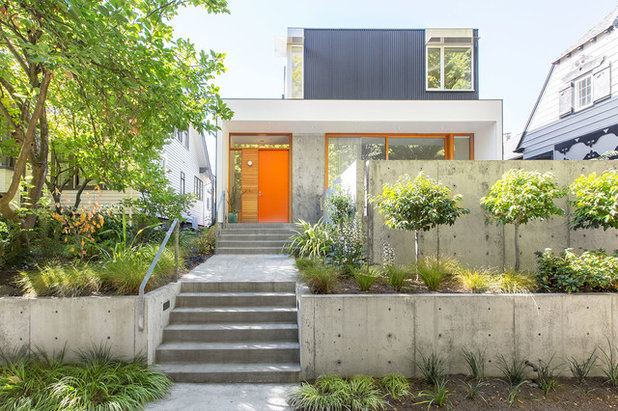
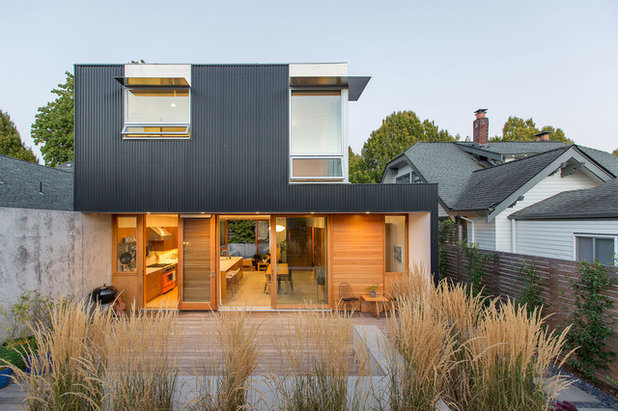
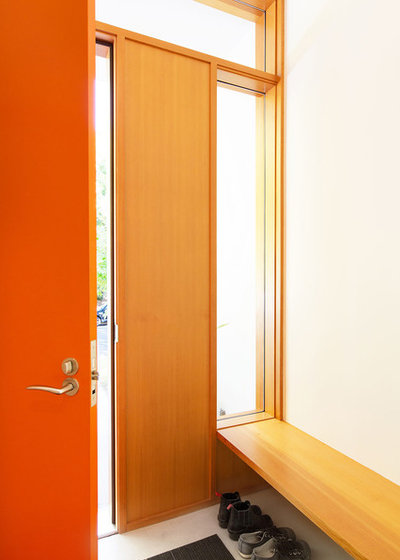
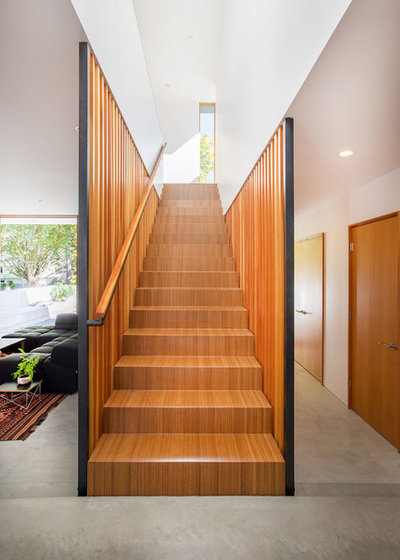
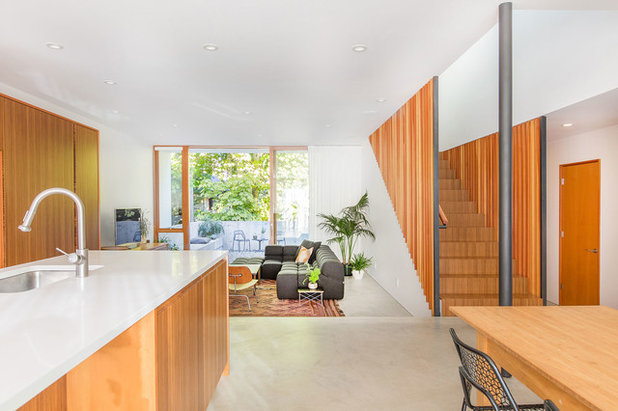
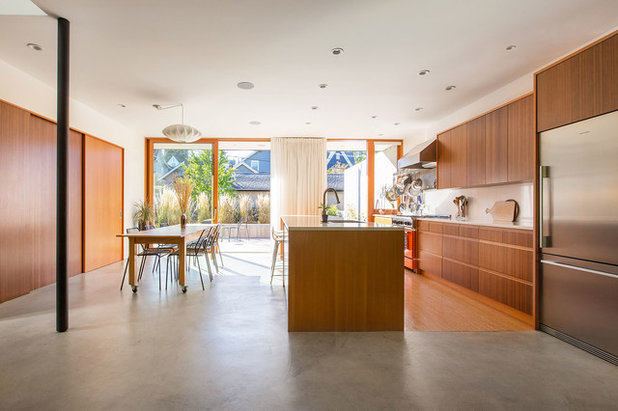
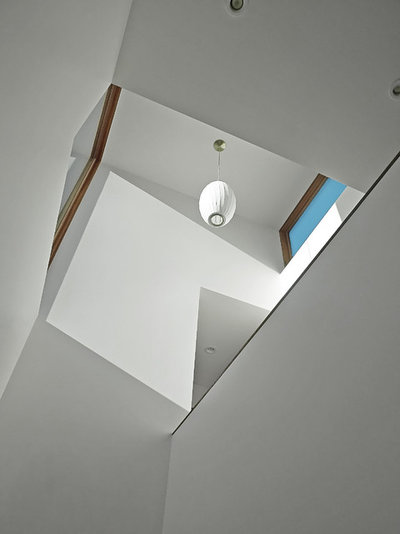
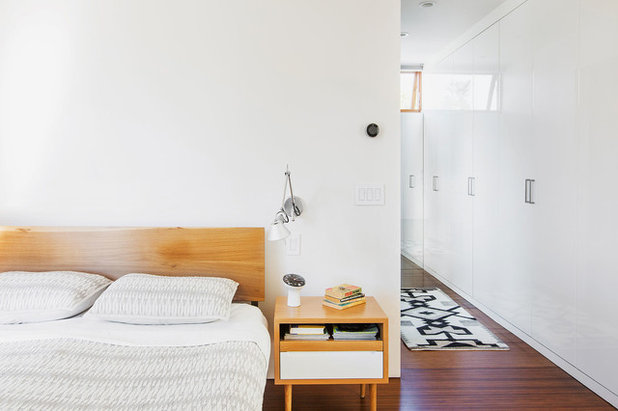
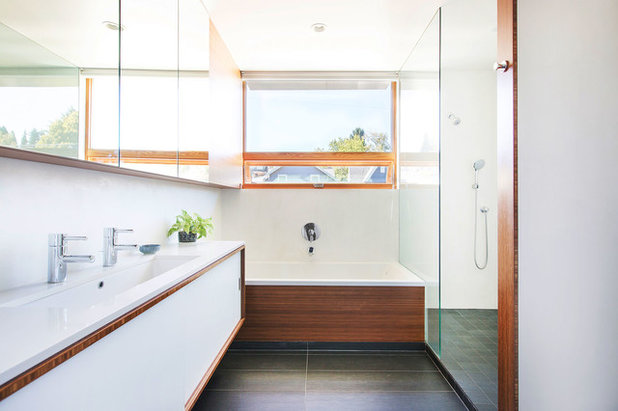

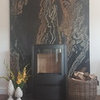
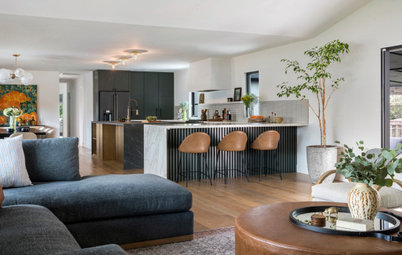
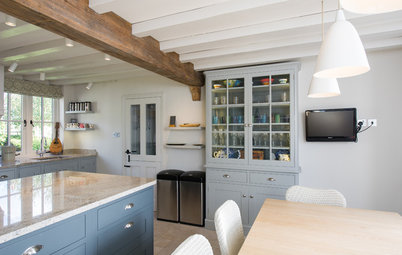
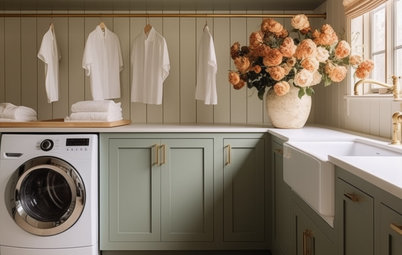
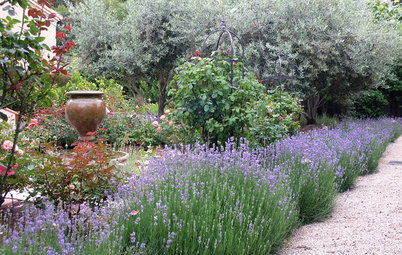
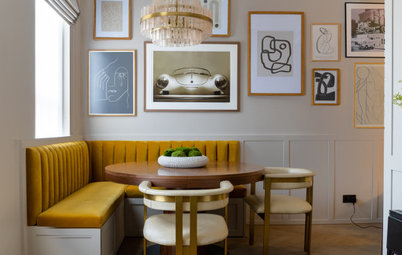
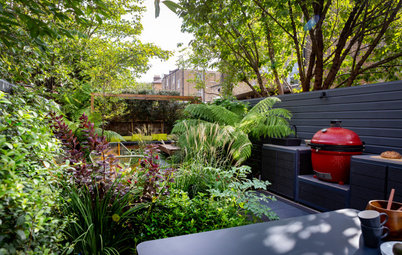
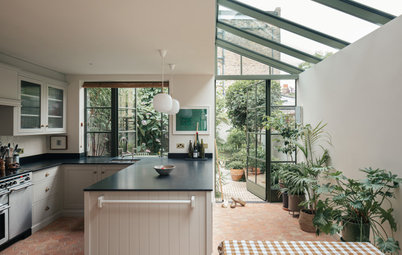

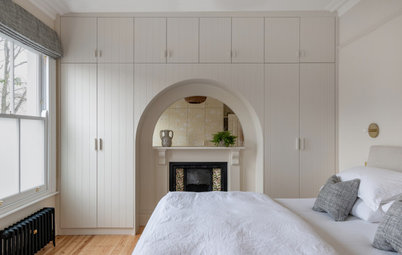
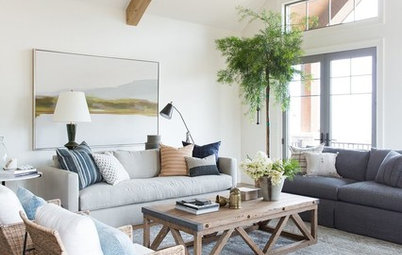
@GrowinFlorida, what bothers me about the current concrete trend is that cement (concrete is cement mixed with sand or aggregate) is possibly the least “green” building material there is. Yet people constantly claim it’s eco-kosher. Cement plants are the biggest producers of carbon dioxide — pumping tons of it into the atmosphere — and are among the highest users of electricity (which is even more carbon dioxide, if that comes from burning coal or oil). Limestone for making cement comes from open-pit mining, leaving the earth permanently scarred. Limestone kilns at cement plants often burn toxic watste from steel manufacturing (slag) — which creates carcinogenic compounds (hexavalent chromium) — or even (filthy, polluting) old tires. And on and on. Add to that the fact that concrete with embedded rebar degrades over time, falling apart from the inside out.
@pfmaher something to think about... what's the material that is as cheap, sleek-looking, long-lasting but ecological at the same time? Seems like incompatible characteristics if you remove concrete from existence. I wish it were greener but what are the alternatives? I tried for months to find concrete-looking materials that wouldn't require weird super-expensive shipments from abroad, and failed. What about you? not being sarcastic, I'm truly interested to find that material(s) for my future projects without burdening our already-burdened ecology...
GrowinForida: wood (trees grow a lot faster than the hundreds of thousands to millions of years it takes for limestone to form), brick (made from raw, young earth scraped from the surface, so no blast mining, although transportation can be high carbon footprint), rammed earth and cob building methods, recycled anything. Concrete recycling is still early days, but those products will, I think, soon be a real option for home builders. I have read about various greener, currently available alternatives to the conventionally manufactured cement block, too (Watershed is one such manufacturer).
It’s not that I think concrete should disappear, but object to the way it is so often greenwashed in design logs and mags.